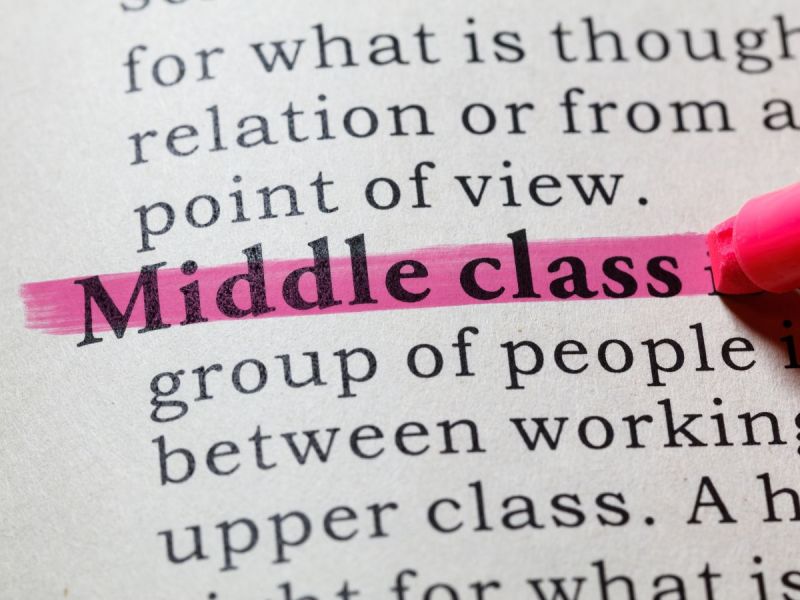To be a comfortable member of the middle class is as integral to the American dream as a house with a white picket fence and an apple pie cooling in the window.
Videos by Suggest
Since the early 1900s, the middle class has served as an attainable lifestyle goal that allowed those who were not quite destitute but not quite wealthy to thrive.
However, according to data from the Pew Research Center, the middle class has been in a steady decline over the last five decades. As the wealth gap widens between rich and poor, those on the outskirts of the middle class either rise or fall into new tax brackets.
So what does being middle class really mean?
That answer depends on who you ask. Let’s break down the various definitions of “middle class” and use those to explore how much money you need to make to be considered a member of the middle class in major U.S. cities.
Defining The Middle Class
The Pew Research Center defines the middle class as having an annual household income that is two-thirds to double the national median income after adjusting for household size. According to 2021 data from the U.S. Census Bureau, the country’s median income is around $70,784.
By that definition, the American middle class currently sits between $47,189 and $141,568. But these numbers vary depending on which institution pulls the data.
For example, the Urban Institute defines the middle class as somewhere between 150 to 499% above the federal poverty line—that shakes out to $66,250 to $158,735 for a family of four.
Moreover, some economists argue that middle-class status is more cultural than financial. This relates to a perceived sense of wealth and financial stability.
Who Is Considered Middle-Class By City
According to an analysis done by CNBC using the Pew Research Center’s definition of the middle class and data from the U.S. Census Bureau, the annual income range can vary greatly by where you live.
Metropolitan areas are notorious for being pricier than their rural counterparts, so we expected the definition of the middle class to vary by state and city. However, it’s more surprising to see just how significant those differences are. Sometimes there’s a difference of tens of thousands of dollars within the same state.

Take northern and southern California. While middle class in the Bay Area clocks in at around $77K to $232K, middle class in southern California is far lower at $55K to $165K. Midwest metros like Chicago boast ranges from $52K to $156K, while smaller cities on the East Coast, like Washington, D.C. and Arlington, VA, range from $74K to $221K.
Floridian cities seem to have the cheapest middle-class range, with northern and central cities ranging from $42K to $126K and southern cities closer to the Keys ranging from $43K to $128K. New England, the Bay Area, and the Pacific Northwest boast the largest gaps between lower- and upper-middle-class incomes.
Where Does Your Income Fall?
Gallup polling reveals around 38% of Americans think of themselves as middle class, and 14% consider themselves upper middle class. Before the Great Recession in 2008, around 9% more Americans classified themselves as middle class.
Since 2008, middle-class identification has decreased while working- and lower-class identifications have increased. The number of those who identify as upper-class has remained at 2%. Gallup stated that this data could indicate a widespread unfamiliarity with social class definitions.
However, Gallup added, it could also mean that “many working Americans today don’t see their work efforts as yielding sufficient income for them to believe they have achieved middle-class status.” This perception could be skewed in either direction—those who believe they are middle class might not be, and vice versa.
Generally speaking, many believe someone to be middle class if they’re not living paycheck to paycheck but can’t financially withstand an extended absence from work. But depending on where you live, that might not be the whole picture.
How do your paystubs compare to the rest of the country?
